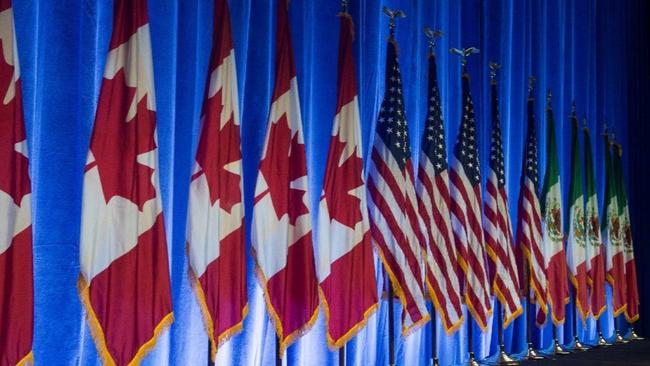President Donald Trump faced such strong criticism for his unforgettably and unforgivably poor response to the horrific violence in Charlottesville, Virginia, this week that not even the firing of his chief strategist Steve Bannon on Friday will be enough for millions of Americans to turn the page.
“We’re going to win so much you may even get tired of winning,” Trump said 15 months ago.
Just plain tired, maybe.
Still, many millions of Americans are steadfast in their support for the president, either because of his title or because of his promises. Now, one of his biggest promises — that Americans “would win with the economy” — is being tested. Since Trump took office, the S&P 500 Index is up 7 percent, but that’s less than a third of the 25 percent gain the index achieved during Obama’s first seven months. The bigger economic test began this week.
For months, Trump has ripped the 23-year-old North American Free Trade Agreement as “the worst trade deal ever made by any country.” Yet he hasn’t ripped it up. In April, after talking with both Mexican President Enrique Peña Nieto and Canadian Prime Minister Justin Trudeau by phone, Trump announced that he would “renegotiate NAFTA rather than terminate” it. Those talks began Wednesday in Washington, D.C., and are expected to last months off and on with the goal being a renegotiated pact before national election campaigns begin in earnest in Mexico and in the U.S. next year.
This week the mayors of San Diego and Tijuana pleaded with many other political and business leaders for negotiators from the U.S., Mexico and Canada to “preserve and modernize” NAFTA instead of junking it and jeopardizing the national economies of a continent. Mexican trade is a focus.
Clearly, the NAFTA negotiations present a president in need of a big policy victory with a bigger opportunity than before. The stakes were already high, following Washington’s health care debacle and weeks of White House aide departures. This is a test of the president’s negotiation skills that he almost can’t afford to fail. White House priorities include reducing its trade deficit with Mexico, expanding manufacturing and improving working standards.
In few places will NAFTA negotiations be followed as closely as here, where the commercial exchange between Tijuana and San Diego is valued at $2.1 million a day. Trade among the U.S., Mexico and Canada has quadrupled since NAFTA took effect in 1994, surpassing $1 trillion in 2015, according to Reuters. Yet there are winners and losers, and Trump keeps blasting the agreement for fueling American job losses and a trade deficit with Mexico.
Last year, per federal data, the U.S. had a $55.6 billion goods and services trade deficit with Mexico and a $12.5 billion surplus with Canada. At $502.3 billion, the overall trade deficit last year marked the 42nd consecutive year that the U.S. has had a deficit. Gerald Ford was president for our last surplus.
Improving NAFTA is entirely possible. The creation of presidents George H.W. Bush and Bill Clinton, the deal was adopted well before Americans fell in love with smartphones, electronic commerce or electric cars. The world just isn’t the same. Frankly, multilateral free trade deals have improved it.
Lost in this discussion so far is that the NAFTA renegotiation is subject to a vote by Congress, where another major Trump campaign promise — to repeal and replace the Affordable Care Act — flailed like a dying fish for weeks before running out of oxygen in the dead of night. At some point, Trump will need to show that he can work with Congress, not just criticize its biggest names on Twitter.
Unlike with the health care debate, these negotiations are his alone. His team has to convince two nations and then Congress, and that may be a tall order. Is the president up to the challenge or will another one of his big campaign promises collapse?
Is Trump a deal maker or a deal breaker?


